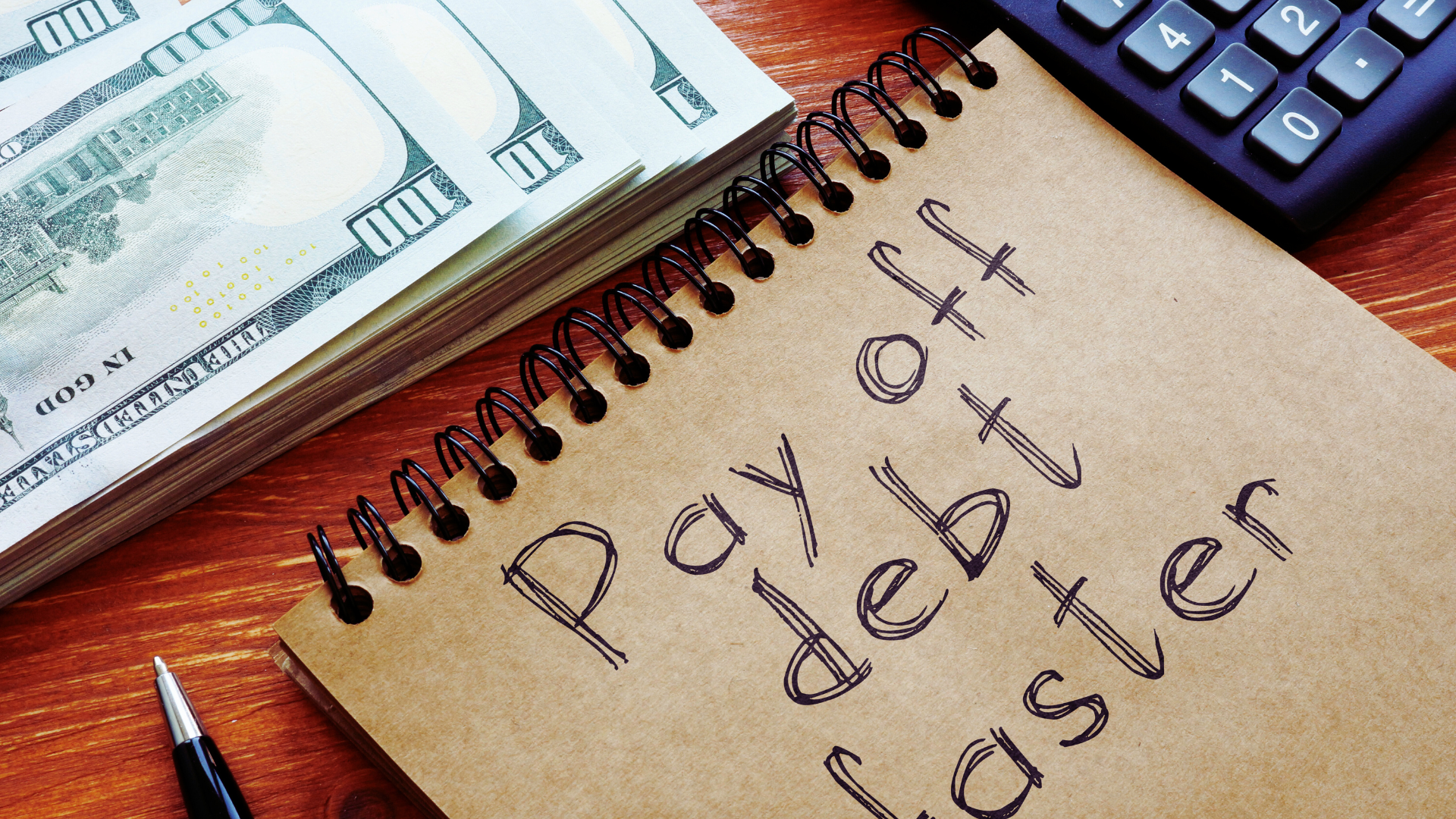Millions struggle with debt, often feeling overwhelmed by the sheer amount they owe. The snowball method offers a straightforward strategy for paying off debt faster by focusing on the smallest balances first. This approach not only simplifies the payoff process but also provides motivational boosts as each debt is eliminated.
By listing debts from smallest to largest and directing extra payments toward the smallest balance, individuals can achieve quick wins. This psychological benefit enhances commitment to the debt repayment journey. As debts are cleared, freed-up funds can be applied to larger debts, accelerating the overall process.
Incorporating the snowball method into a financial plan can lead to significant progress and a sense of control over one’s finances. Understanding its mechanics can empower anyone to tackle their debt systematically and effectively.
Understanding the Snowball Method
The snowball method is a popular debt repayment strategy that focuses on emotional motivation along with financial management. It emphasizes tackling smaller debts first, which can create momentum as larger debts are gradually eliminated. This approach contrasts with other strategies that might seem more logical on paper, such as the avalanche method, which prioritizes debts with higher interest rates.
What Is the Debt Snowball Method?
The debt snowball method involves listing debts from smallest to largest, regardless of the interest rates. The individual makes minimum payments on all debts except the smallest one, to which they apply any extra funds. Once the smallest debt is eliminated, they redirect the payment amount to the next smallest debt.
This gradual approach can boost motivation as debts are paid off quickly. It turns paying off debt into a series of small victories, reinforcing the habit of consistently paying debts.
Debt Snowball vs. Avalanche Method
The key difference between the debt snowball and avalanche methods lies in the order of payment priority.
- Snowball Method: Focuses on the smallest debts first to build momentum.
- Avalanche Method: Targets debts with the highest interest rates first to optimize savings on interest payments.
While the avalanche method may save more money in the long run, many find the snowball method more motivating due to the quick wins it offers. Choosing between these methods often depends on an individual’s personality and their need for psychological encouragement during the debt repayment journey.
Key Principles of the Snowball Method
Several principles underlie the effectiveness of the snowball method.
- Behavioral Motivation: Paying off smaller debts first can create a sense of accomplishment, inspiring further efforts in debt repayment.
- Focused Payments: By concentrating resources on one debt at a time, individuals can make substantial progress more quickly.
- Simplified Tracking: Managing fewer debts makes it easier to keep track of payments and progress.
These principles highlight the emotional and practical benefits of the snowball method, making it a viable option for those seeking to enhance their debt repayment experience.
Step-by-Step Guide to Implementing the Snowball Method
To effectively use the snowball method for debt repayment, several key steps are essential. This process involves organizing debts strategically and directing extra funds to eliminate debts efficiently.
List Your Debts
The first step in the snowball method is to create a comprehensive list of all debts. This includes credit cards, personal loans, student loans, and any other outstanding balances. Each entry should include the total balance, minimum payment, and interest rate for a clear overview of financial obligations.
Listing debts provides a foundation for effective debt management. It allows individuals to visualize their total debt and identify priorities. This transparency is crucial for staying motivated throughout the repayment journey.
Determine Minimum Payments
Once the debts are listed, the next task is to determine the minimum payments for each debt. These payments are the least amount required to avoid penalties and keep accounts in good standing. It is critical to ensure these minimum payments are manageable within the budget.
By knowing the minimum payments, individuals can draft a realistic monthly plan. This plan helps to establish a baseline to ensure that essential debts are covered while allocating extra funds toward the smallest debts.
Organize Debts by Smallest Balance
After identifying minimum payments, the next step involves organizing the debts by their smallest balance. This prioritization is a core tenet of the snowball method, as it focuses on paying off the lowest debts first.
Typically, individuals should list the debts in ascending order based on their total balances. This approach creates quick wins, as paying off smaller debts can provide a psychological boost. The sense of accomplishment from eliminating a debt can motivate continued efforts in managing larger balances.
Apply Extra Money Toward the Smallest Debt
With the smallest debts identified, the next step is to apply any extra money towards the smallest debt. This additional payment should be above the minimum amount due. Allocating extra funds accelerates the progression toward paying off that specific debt.
This approach not only helps eliminate the smallest debt quickly but also creates momentum. Once the smallest debt is settled, the individuals shift their focus to the next smallest debt, repeating the process. Each completed payment contributes to an effective debt payoff plan, promoting confidence and motivation to continue.
Maximizing the Effectiveness of the Snowball Method
To optimize the Snowball Method for paying off debt, it is essential to focus on building momentum, leveraging psychological benefits, and adapting strategies to maintain motivation. Each element plays a significant role in accelerating the journey to becoming debt-free.
Building and Maintaining Momentum
Momentum is crucial for staying committed to debt repayment. Starting with the smallest debts creates quick wins that boost confidence. Each time a debt is paid off, the individual can allocate the freed-up funds toward the next smallest debt.
Steps to Build Momentum:
- List Debts: Order debts from smallest to largest.
- Set Milestones: Establish clear goals for each debt payoff.
- Celebrate Success: Acknowledge each payment made, reinforcing positive behavior.
These actions ensure sustained motivation, making the repayment process feel achievable.
Harnessing Psychological Benefits
The psychological boost from the Snowball Method can significantly impact motivation. Paying off smaller debts first triggers positive feelings, enhancing the individual’s focus on financial goals. Success fosters a sense of accomplishment, which can drive persistence in tackling larger debts.
Strategies to Enhance Psychological Benefits:
- Visual Progress: Create a chart or graph to visualize debt reduction.
- Accountability Partner: Share goals with a friend or family member for support.
- Reward System: Set aside a small reward for each debt eliminated.
These techniques help keep the mind engaged, reinforcing the importance of remaining on track.
Adapting Your Repayment Strategy to Stay Motivated
Flexibility in repayment strategies is essential for ongoing commitment. If motivation wanes, adjustments in the approach can reignite enthusiasm for debt repayment. This may involve temporarily focusing on an emotional or financial priority that provides a renewed sense of purpose.
Adjustments to Consider:
- Refinancing High-Interest Debts: Lower payments can relieve pressure.
- Increase Monthly Payments: If finances allow, higher payments can lead to quicker payoff.
- Monthly Check-ins: Regularly reassess goals and progress to stay inspired.
Implementing these adjustments can help maintain momentum and commitment on the road to being debt-free.
Additional Tips and Alternative Strategies
Making the most of strategies to pay off debt can significantly enhance one’s financial situation. Optimizing a budget and reducing interest rates are key steps. Additionally, considering debt consolidation and utilizing extra income from side hustles can contribute to faster debt repayment.
Optimizing Your Budget
Creating a detailed budget is essential for effective debt repayment. This starts with listing all monthly expenses and income sources. Identifying discretionary spending areas allows individuals to eliminate or reduce non-essential expenses.
- Track Spending: Use apps or spreadsheets to monitor financial habits.
- Set Limits: Allocate specific amounts for categories like entertainment and dining.
Redirecting these savings towards debt repayment can accelerate the snowball effect. Keeping the budget flexible helps in adjusting for unforeseen expenses, ensuring continued progress.
Reducing Interest Rates
High-interest debt can significantly slow down repayment efforts. Individuals may consider negotiating lower rates with creditors or transferring balances to lower-interest credit cards.
- Contact Creditors: Call to request a better rate, especially if on-time payments have been made.
- Balance Transfer Credit Cards: Look for options offering 0% introductory rates for a limited period.
This approach can reduce monthly payments and interest charges, freeing up more funds for principal repayment. Evaluating personal loans for lower interest rates is also beneficial.
Considering Debt Consolidation and Balance Transfers
Debt consolidation can simplify repayment by combining multiple debts into a single loan with a potentially lower interest rate.
- Personal Loans: Investigate options that offer better terms than existing debts.
- Balance Transfers: These can provide a temporary reprieve from high-interest rates, allowing focus on paying down principal.
Consolidation may also streamline monthly payments, making financial management more manageable. It’s crucial to carefully assess fees and terms associated with these options to mitigate risks.
Using Extra Income: Side Hustles and More
Increasing income through side hustles can significantly impact debt repayment. Individuals can leverage skills or hobbies to generate additional funds.
- Freelancing: Offer services like writing, graphic design, or consulting.
- Selling Items: Clear out unused belongings to gain extra cash.
This additional income can be directly applied to debt payments. Establishing an emergency fund from side hustle income is also advisable, protecting against unexpected expenses that could derail repayment plans.

